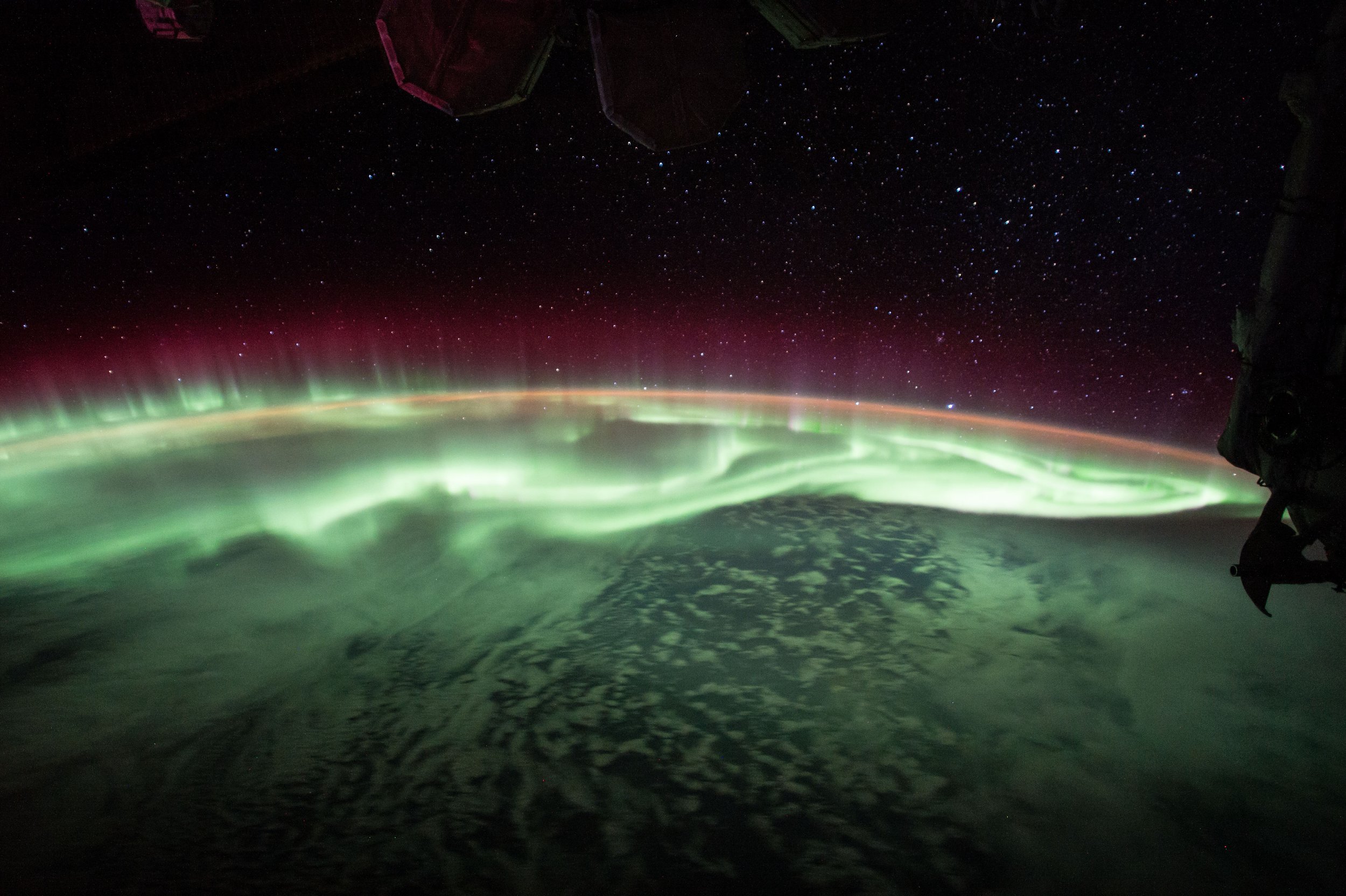
Magnetism
Flows of charged particles produce magnetic fields, and magnetic fields alter how charged atmospheric particles flow
Currents and Fields
The phenomenon we call magnetism arises from motions of charged particles that produce an electrical current. In an iron magnet, the currents come from spinning electrons. Inside the Earth, they come from circulation of molten rock. In a galactic atmosphere, they come from flows of ionized gas.
Charged particles moving in the vicinity of an electrical current experience a magnetic force in addition to any electrical forces they would experience in the absence of a current. A magnetic force tends to deflect a charged particle away from its current path, in a direction perpendicular to the direction of motion. Physicists attribute that deflection to the presence of a magnetic field oriented perpendicular to the magnetic force acting on the charged particle.
That magnetic field also points in a direction perpendicular to the current that produces it. Earth’s magnetic field therefore tends to be aligned with its rotation axis, since the internal currents producing that field tend to circulate around that axis. Lines representing the direction of Earth’s magnetic field emerge from Earth’s surface in the vicinity of the North Pole, curve through space so that they are parallel to Earth’s surface above the equator, and reenter Earth’s surface near the South Pole.
Gyrating Particles
Magnetic forces acting on charged particles can make those particles move in circles. The magnetic force on a particle moving at a speed $v_\perp$ perpendicular to some magnetic field lines of strength $B$ is $$F = q v_\perp B$$where $q$ is the particle’s charge. A charged particle of mass $m$ therefore experiences an acceleration $a_\perp = q v_\perp B / m$ in a direction perpendicular to both the particle’s velocity and the local magnetic field lines.
That acceleration causes the particle to gyrate in circles of radius $$r = \frac {m v_\perp} {q B}$$around the magnetic field lines. Typically, the particle’s velocity also has a component $v_\parallel$ parallel to the magnetic field lines. The particle’s path is consequently a spiral of radius $r$ with a drift speed $v_\parallel$ in the direction of the magnetic field.
For all but the most energetic particles, the gyration radius is much smaller than Earth’s radius. Charged particles entering Earth’s atmosphere therefore tend to move along the magnetic field lines like beads on a string but cannot move very very far in directions perpendicular to those field lines.
Magnetosphere
Magnetism does not strongly affect the atmosphere near Earth’s surface because few of the atmospheric particles there have a net charge. They are mostly neutral atoms and molecules. However, atmospheric gas at greater altitudes is more highly ionized and therefore more strongly influenced by Earth’s magnetic field.
At very high altitudes, a flow of charged particles known as the solar wind runs up against Earth’s atmosphere. Solar wind particles are generally unable to make it all the way down to Earth’s lowest atmospheric layers. Instead, they tend to gyrate around magnetic field lines that remain far from Earth’s surface.
However, some of the magnetic field lines that emerge from Earth’s surface near the poles extend into the upper regions of Earth’s atmosphere. Particles gyrating around those field lines can therefore channel bursts of energy from the solar wind into lower atmospheric regions. As the energized particles spiral down toward the poles, they collide with atmospheric atoms, causing a glow known as an aurora.
The photo at the top of this page shows what an aurora looks like from the vantage point of the International Space Station.
Cosmic Rays
Magnetic fields are usually more influential in galactic atmospheres than in planetary atmospheres, because the proportion of charged particles in a galactic atmosphere is greater. The resulting pressure that magnetic fields exert in some regions of the Milky Way’s atmosphere is comparable to the thermal gas pressure.
Also, extremely energetic particles known as cosmic rays permeate our galaxy’s atmosphere and flow along its magnetic field lines. They originate in the shock waves of supernova explosions, which accelerate cosmic-ray particles to nearly light speed. Magnetic fields prevent most of those high-energy particles from escaping the galaxy. Instead, they spiral around the galaxy’s magnetic field lines while drifting along them.
Earth’s magnetosphere protects us from most kinds of cosmic rays. The vast majority don’t have enough energy to go all the way across the grain of Earth’s magnetic field to Earth’s surface before being deflected back into space. However, the highest-energy cosmic rays in our galaxy’s atmosphere are harder to deflect. Those cosmic rays can make their way all the way down to Earth’s surface.
Cosmic rays from the galaxy’s atmosphere therefore play a role in the evolution of life. When they penetrate the body of a terrestrial organism, they can cause molecular changes and genetic mutations. Many of those mutations may be detrimental to the organism’s health, causing cancer, for example. But every once in a while, the mutation’s effect on survival is positive and drives evolution forward.